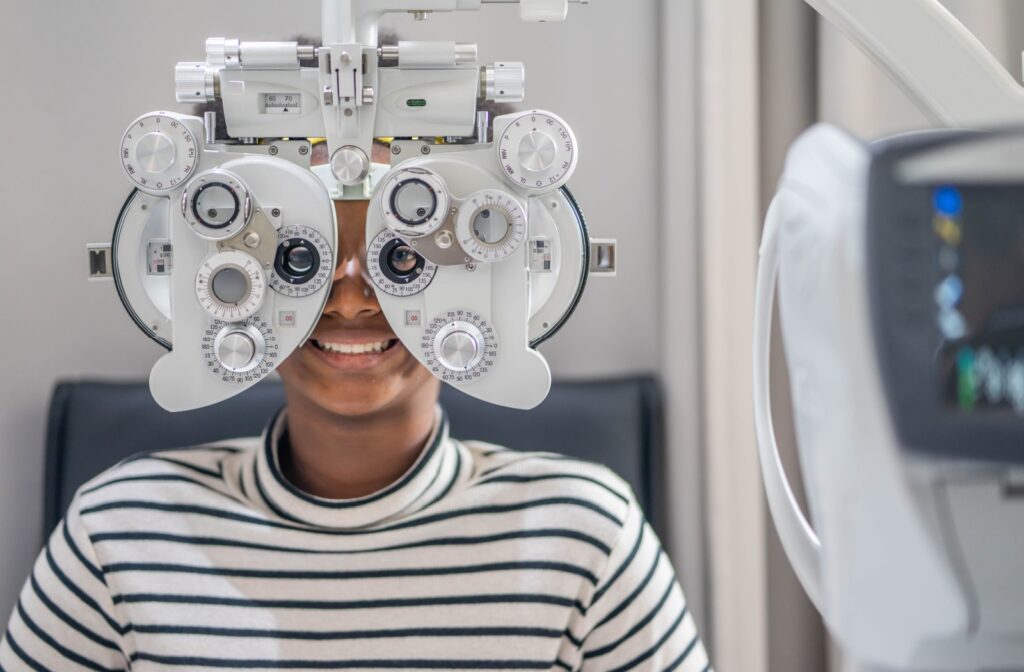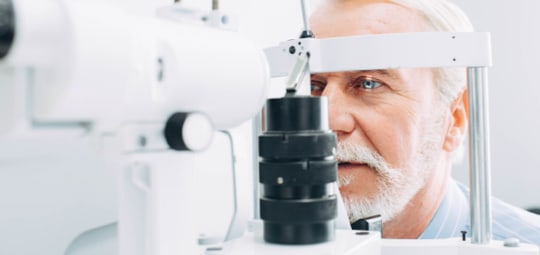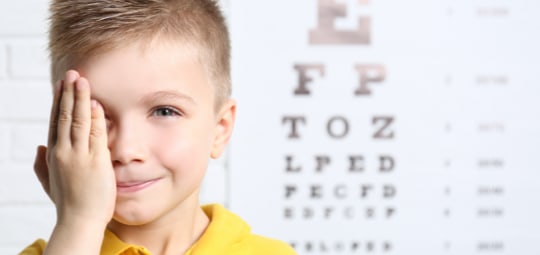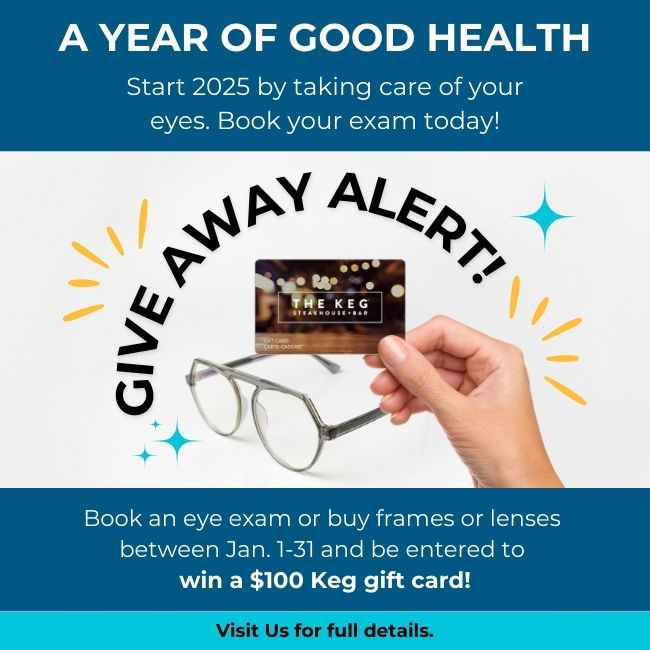Are you puzzled by the term “refraction” that pops up during every eye exam? You’re not alone! Understanding what refraction means and why it matters can help anyone who wants clear, comfortable vision.
Refraction refers to how light bends. A refractive error occurs when light is bent incorrectly by the eye, causing a person’s vision to be blurry at one or more distances. Common refractive errors include conditions like myopia, hyperopia, and astigmatism.
It’s important to schedule regular comprehensive eye exams not only to check for refractive errors, but to take stock of your overall eye health.
What Are Refractive Errors?
When light passes through your eye, it’s supposed to hit your retina, the tissue at the back of your eye that sends signals to the brain. For some people however, light is focused in front of or behind the retina, resulting in a blurry image. The resulting vision issues are referred to as refractive errors..
Refractive errors are not considered diseases. Most refractive errors can be corrected with prescription glasses, contact lenses, or surgery. Common types of refractive error include myopia (nearsightedness), hyperopia (farsightedness), astigmatism, and presbyopia.
Myopia (Nearsightedness)
A person with myopia can clearly see things up close, but objects far away are blurry. This happens because the eye is either too long or the cornea is too curved.
Myopia is very common, affecting 30% of people. Children whose parents have myopia are more likely to have it themselves. The condition is also linked to prolonged near work, such as reading and screen time. However, myopia’s progression can be slowed in children with interventions like atropine eye drops and multifocal lenses.
Being nearsighted puts you at increased risk of conditions like retinal detachment, glaucoma, and cataracts—even if you wear glasses or have had surgery. That’s why it’s important to get your eyes checked regularly, both to keep your prescription up to date and to screen for possible health issues.
Hyperopia (Farsightedness)
A person with hyperopia can see distant objects clearly, but nearby objects appear blurry. This happens because the eye is too short or when the cornea is not curved enough.
Because casual vision tests (such as looking at charts) test your ability to see at a distance, they may not catch farsightedness. As such, hyperopia is typically diagnosed at a comprehensive eye exam. It can then be managed by prescription glasses or contact lenses.
Astigmatism
Many people have some degree of astigmatism, which is blurry vision caused by an irregularly shaped lens or cornea. This irregular shape affects refraction, leading to blurry vision.
Causes of astigmatism include genetics, injury, surgery, and eyelid pressure. Because astigmatism often develops at an early age, it’s important to take kids to the eye doctor for eye exams (age-related recommendations are listed below). Treatment options for astigmatism include prescription eyewear, surgery, and orthokeratology (contact lenses that are worn overnight).
Presbyopia
Our eyes change as we age, and presbyopia is a natural progression of that process. Presbyopia occurs when vision becomes blurry due to the lenses of our eyes becoming less flexible over time. Signs and symptoms begin to show after age 40. People may notice they need to hold things further away to read them.
Presbyopia can be treated with several types of glasses, including bifocals, trifocals, and progressive lenses.
How Optometrists Test for Refractive Errors
During a comprehensive eye exam, your optometrist will measure refraction to check for changes in prescription power. They may shine a light into each of your eyes or use a machine to measure the light that bounces off your retina.
They may also use a device called a phoropter, which is a large piece of equipment that hangs in front of your face and over your eyes. This involves looking at letters or images mounted on a wall about 20 feet away. Your optometrist will test each eye, asking you to identify letters while changing lenses. This process identifies your specific prescription power.
What Is “20/20 Vision”?
You may have heard the term “20/20 vision” to describe perfect vision, but what do these numbers mean? Well, 20/20 simply means you can see something at 20 feet as well as someone who has good vision.
If your vision is 20/40, you need to be 20 feet away to see something that someone with good vision can see clearly at 40 feet. In other words, you have to be twice as close to the object to see it equally clearly. The higher the second number is, the weaker your vision is compared to the norm.
The Importance of Regular Eye Exams
Regular comprehensive eye exams can help you keep your eyeglasses up to date, but they’re not just for refraction tests. Even people with good vision benefit from regular eye exams. That’s because these tests can uncover conditions like glaucoma, which may not be noticed until the disease has reached a more serious stage. Eye exams can also detect underlying health conditions like diabetes, hypertension, and some neurological disorders.
So, how often should you get your eyes checked? Here are some general guidelines from the Canadian Association of Optometrists:
- Babies should receive their first eye exam between 6 and 9 months of age
- Young children aged 2 to 5 should get their eyes checked at least once
- Youth aged 6 to 19 should have annual eye exams
- Adults aged 20 to 64 should undergo an eye exam every two years
- Older adults aged 65 and up should have annual eye exams
- Adults with diabetes should get their eyes checked at least once a year
- People with certain conditions may need more frequent eye exams
Are you due for your next eye exam? Our community-oriented eye care clinic in Stoney Creek strives to be accessible to clients, with many evening and Saturday appointments available in a central location. Book an appointment with Stoney Creek Optometry today.






















